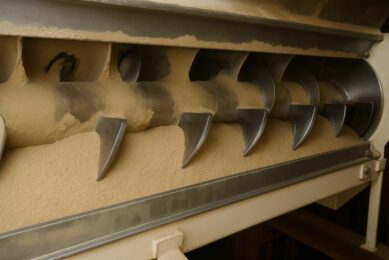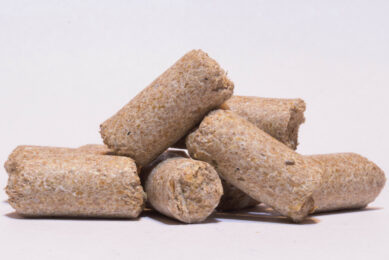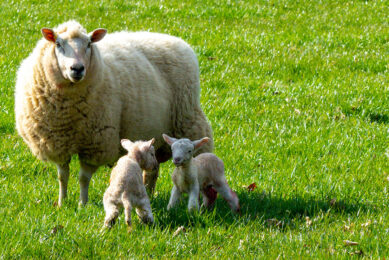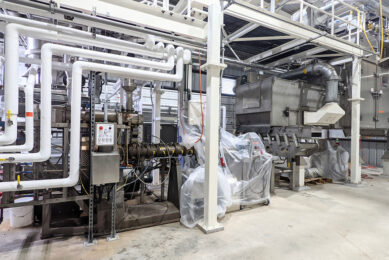Correct choice of die improves capacity and quality
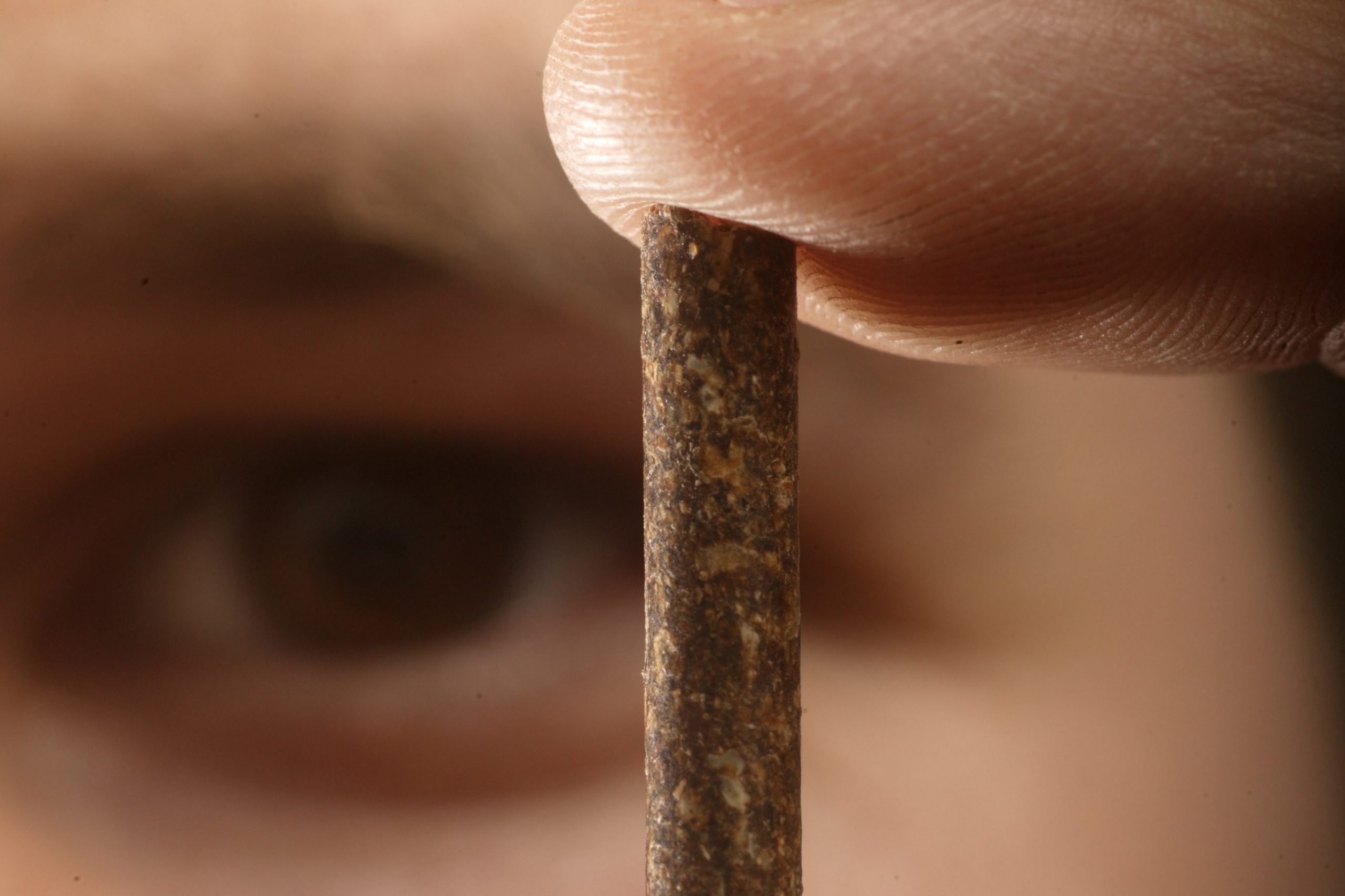
Through the correct choice of the die in pelleting animal feeds, production capacity and quality improvements can be obtained. In this article we explain which factors to consider.
The die certainly represents the core of the pellet mill. It is the most delicate part of the mill and it is therefore necessary to possess extensive know-how developed through a combination of experience and engineering, in order to be able to produce high-quality dies.
Factors to consider
The quality of pelleted feed and the die lifetime mainly depend on the following factors:
• Type of feed and its formula
• Characteristics of the raw materials present in the feed formulation
• Quantity of fat
• Addition of steam
• Particle size distribution of the meal before pelleting
• Conditioning of the meal
• Meal moisture content
• Pelleting line’s efficiency and performance
• Quality of the die
• Quality of the rolls and of their assembly
• Correct installation of spare parts such as die, rolls, deviators and scrapers
• Regulation of the gap between die and rolls.
It is not advisable to decide on a die supplier by only evaluating a single die price without considering its characteristics, potential lifespan and performance, and therefore its cost per ton of product and the quality of the pelleted product.
The main variables affecting the quality of a die are:
• Steel alloy used
• Correct choice of compression
• Consistency of the die’s surface
• Aperture design, distribution and pitch
• Heat treatment of the die after manufacture.
Metal alloy
The die metal depends on the product characteristics. Generally, stainless steel dies are recommended for animal feed, as they ensure a longer lifespan and prevent rust from entering the feed. General Dies, for instance, manufactures dies in a special stainless steel alloy, called X46CR13, procured from the very best German steel manufacturers. A low-quality steel die affects the quality of the final product, in terms of hardness, rust presence in the feed and shorter lifetime as well as inherent dangers of the die collapsing or cracking, thereby causing major damage to the press and causing a considerable increase in costs.

Compression
The correct compression is probably the main aspect in selecting a die for production. In order to identify the optimal compression, it is necessary for a die manufacturer to have analysed thousands of pellets and to be able to understand whether the die in use features an optimal compression or if some improvements can still be made. An incorrect choice of compression may cause malfunctioning in the pellet mill or a decrease in the product quality. The other aspect, of course, is energy consumption during processing. With an incorrect compression selection, either an excessive or an insufficient amount of energy is consumed to produce an inferior pellet.
Understanding compression
Compression is expressed as an index, being the ratio of aperture active length over diameter in the case below L1/D1. The active length excludes the relief, being the part at the bottom of the aperture where it widens before the pellet is expelled from it. The pellet diameter, in turn, excludes the countersunk part at the entrance to the aperture. The relief is placed in the die to provide it with greater strength. Therefore, at 20mm active length and 6mm die diameter, the compression ratio would be 3.33. The higher this ratio (for instance 30mm length at 6mm diameter = 5 ratio) the denser the pellet, but the lower the capacity and the higher the energy consumption will be. Conversely, with a lower compression ratio, a looser pellet is produced, but with higher capacity output and lower energy input.
Techniques influencing compression
Reverse taper relief: For certain products a reverse taper relief is used. This means that the aperture gradually tapers outward as the pellet leaves the compression area. As the wear on the die increases the pellet diameter, this lowering of the compression ratio is offset by the longer effective length of the aperture, thereby bringing the compression ratio back to its original. This is often used with ‘spongy’ materials such as fish feed or lucerne.
Tapered inlet: Where a crumbly pellet is produced, the aperture inlet can be tapered to increase pressure inside the die aperture, thus avoiding excessive die thickness. An 8mm die can have as much as a 15-20mm deep tapered inlet, ensuring a tight pellet without excessive die thickness.
Countersunk apertures: The inlet to the aperture can be countersunk to guide product into the aperture. This countersink normally has a 50-60° angle. Care should however be taken: An excessively deep countersink may result in letting in too much product, thereby having a pre-compression effect by overloading the aperture and resulting in failure , especially during the first few days of usage.
Increased aperture inlet: The aperture inlet can be increased by up to 30% of the total aperture length and can be up to double the diameter of the pellet. This extreme form of pre-compression is for instance used where a very oily product is processed with a considerable amount of lubrication, and where additional compression is required to create mechanical shear for forming harder pellets. Shallow increased wells can be used for bulkier material.

Surface rugosity
The slight variations of the amplitude in the surface height is kept to the minimum in high-quality dies. Should this surface be uneven, which is not easily visible to the naked eye, it may have the following causes during processing:
• Difficulty starting, especially initially.
• Vibration of the press
• Decrease in production
• Poor pellet quality
• Production disruption.
Heat treatment
Without heat treatment, the lifespan of the die would be incredibly short. The quality of the heat treatment is vital to ensure consistency throughout every point in the die, thereby preventing more rapid wear in certain parts and affecting the die lifespan. A constant hardness of 54 +- 2 HRC (Rockwell scale C) from the surface to the core is required in good quality dies.
Aperture distribution
• An uneven aperture distribution caused by inferior drilling technology can cause uneven wear of the die, resulting in a shorter lifespan
• A quality manufacturer would design the closest pitch pattern of apertures, without compromising the structural strength of the die.
In short, the miller may feel that he is initially spending too much on this vital part of his process. However, if he should analyse the costs, he would realise the value of fewer problems encountered, less stripping, cleaning and production interruptions, prompt starting, better and consistent pellet quality as well as longer die, pellet mill and roller life.
This article has been reprinted from AFMA Matrix.




